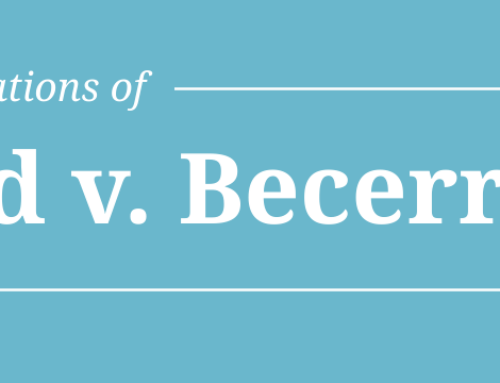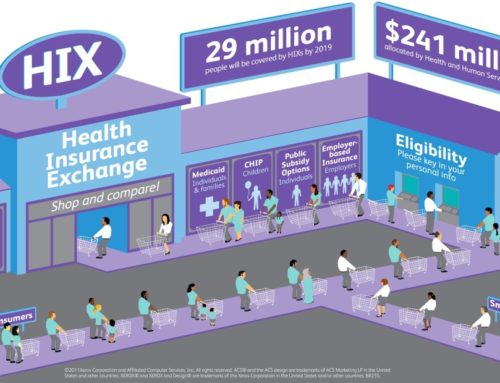Originally Produced: May 2012 Updated: July 2016
“Will V-BID Save My Company Money?” A Guide To Thinking About V-BID Implementation
Value-Based Insurance Design (V-BID) is one of the most innovative and widely implemented approaches to enhance clinical outcomes and control the cost of health care. The goal of V-BID is to align patients’ out-of-pocket costs, such as copayments and premiums, with the “clinically nuanced” value of health services. Restructuring wellness programs and health insurance plans to provide consumer incentives for evidence-based care can help refocus health care expenditures on value rather than volume, especially if provider payments are restructured along similar lines.
There are multiple approaches to V-BID, which may include “carrots” or “sticks,” targeting specific clinical services, and identifying patients with particular clinical diagnoses.i V-BID uses incentives to encourage the following:
- Use of high-value services, including preventive services and certain prescription drugs, often covered at low / no co-payment levels that encourage appropriate use;
- Healthy lifestyles, such as smoking cessation or increased physical activity, often fostered by a worksite culture of health; and
- Use of high-performing providers who routinely attain validated quality measures and adhere to evidence-based treatment guidelines.
Although each of these methods aims to improve health, the effects on health care expenditures (direct medical costs) and aggregate financial impact on the organization depend on the specific elements of the V-BID program. If your company chooses to implement a value-based plan, evidence shows that return on investment may occur in two areas:
- Improved health outcomes, leading to a reduction in the number of costly complications resulting in direct medical offsets;
- Enhanced productivity, lower disability and other performance improvements.
The overarching goal of V-BID is to encourage employees to use high-value services in order to live healthier lives. Companies have the potential to see a positive return when their employees use high-value services to become healthier and accrue non-medical economic benefits from improved health in addition to direct medical savings.ii
Incentivizing High-Value Care
V-BID “carrot” approaches include the use of plan-based rewards such as reduced premiums, lower or eliminated copayments, lower deductibles, contributions to health savings accounts and other cash rewards.iii
In the short-term, reducing financial barriers for beneficiaries is not likely to reduce direct health care expenditures. Businesses should anticipate that in the short to medium term, cost savings will accrue to employees rather than the employer. For example, diabetics who are eligible for full prescription coverage will see a decrease in their out-of-pocket spending, but the employer is likely to see an increase in prescription drug costs before direct medical costs decline in the long term. However, lowering co-payments will lead to better adherence to preventive services, medications and recommended care, leading to a future enhancement to the bottom line. Recent research demonstrates that when a V-BID program that lowers co-payments is combined with a disease management program, medication adherence can be improved without increasing total medical spending.iv,v Companies may also use V-BID to improve plan value by focusing on specific wellness and preventive services and/or targeting common and costly clinical conditions. The more targeted the program, the greater potential to produce a favorable return on investment. For example, a company may create a V-BID program to incent employees to quit smoking, enroll in a disease management program, or receive care within a particular network of doctors that offer high-value care.
Discouraging Low-Value Care
Because most “carrot” V-BID programs do not immediately lower medical spending, a decrease in price and/or a reduction in the use of services may be considered. Thus, a V-BID plan may also use “sticks” to discourage employees from seeking low-value care by raising co-payments for low-value service and medications, or increasing deductibles for employees that do not adhere to recommended medications or treatments.vii Theoretically, disincentives could also take a less targeted approach by raising copayments, to a lesser degree, on all services not designated as high-value. Each of these methods has the potential to lower medical spending, but stick approaches are more likely to be viewed negatively by employees. Carrot and stick approaches can be implemented in a complementary fashion, to offset added employer costs resulting from lower out-of-pocket employee costs. This approach was recently implemented in Connecticut where the state government has negotiated with its employees to create a balanced plan that lowers costs for preventive care and chronic disease management, but raises costs on employees who do not participate in the program.viii
Integration with Other Innovations
Incorporating clinical nuance into benefit design, V-BID provides a more strategic allocation of health expenditures, improves employee health and enhances employee productivity, thereby contributing to an organization’s financial health. The potential for achieving a positive return on investment increases when the V-BID implementation is highly targeted, uses disincentives for low value care, accounts for the benefits of higher productivity, is integrated with other wellness incentives, and improves uptake by communicating clearly with employees about the benefits available to them. Moreover, the positive return can be accelerated if V-BID is linked to ongoing efforts such as the Patient Centered Medical Home, health information technology, Consumer-Directed Health Plans, and wellness programs.
If you think V-BID may be right for your organization, please refer to the award-winning “Value-Based Insurance Design (VBID) Landscape Digest,” a guide that includes case studies on implementation.
For More Information

References:
- Sipkoff M. Value-Based Insurance Design: Spend a Little More on Selected Patients For Payoff Down the Line. Managed Care (August 2009). Accessed at: https://vbidcenter.org/wp-content/uploads/2014/11/V-BID-Spend-a-Little-More-on-Selected-Patients-for-Payoff-Down-the-Line_Managed-Care_2009.pdf
- To learn more about the full value health investments, employers are encouraged to read “Synergies at Work: Realizing the Full Value of Health Investments” which highlights the importance of measuring your health investment impacts, including productivity improvements.
- Gibson TB, Mahoney J, Ranghell K, Cherney BJ, McElwee N. Value-Based Insurance Plus Disease Management Increased Medication Use and Produced Cost Savings. Health Affairs (January 2011) 30:1.
- Ibid.
- Choudhry NK, Avorn J, Glynn RJ, Antman EM, Schneeweiss S, Toscano M, Reisman L, Fernandes J, Spettell C, Lee JL, Levin R, Brennan T, Shrank WH. Full Coverage for Preventative Medications after Myocardial Infarction. The New England Journal of Medicine (December 2011) 365:2088-2097.
- National Business Coalition on Health. Value-Based Benefit Design: A Purchaser’s Guide. January 2009. Accessed at: http://www.sph.umich.edu/ vbidcenter/registry/pdfs/VBBDPurchaserGuide[/fusion_builder_column][1].pdf
- Fendrick AM, Smith DG, Chernew ME. Applying Value-Based Insurance Design to Low-Value Health Services. Health Affairs 29, 11 (2010): 2017-2021. DOI 10.1337/hlthaff.2010.0878
- For more information on Connecticut’s plan, please see: http:// www.sph.umich.edu/vbidcenter/healthreform/pdfs/ StateLocalEmplBenefitReform.pdf






